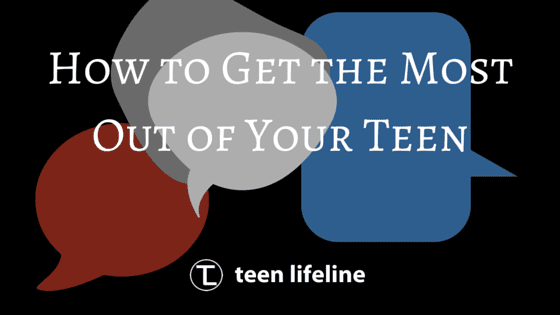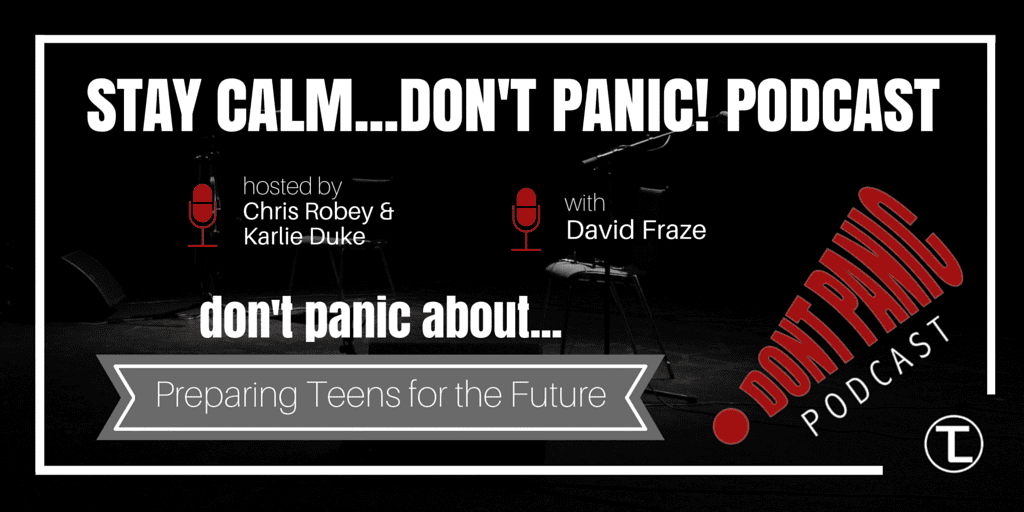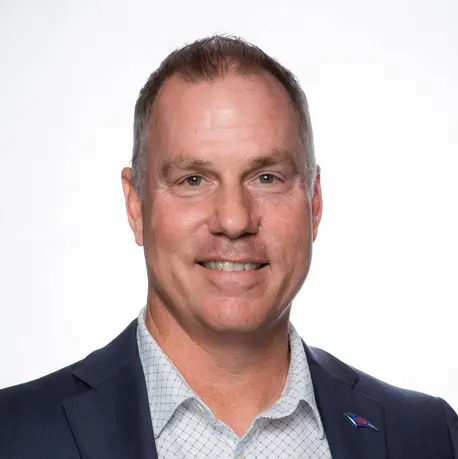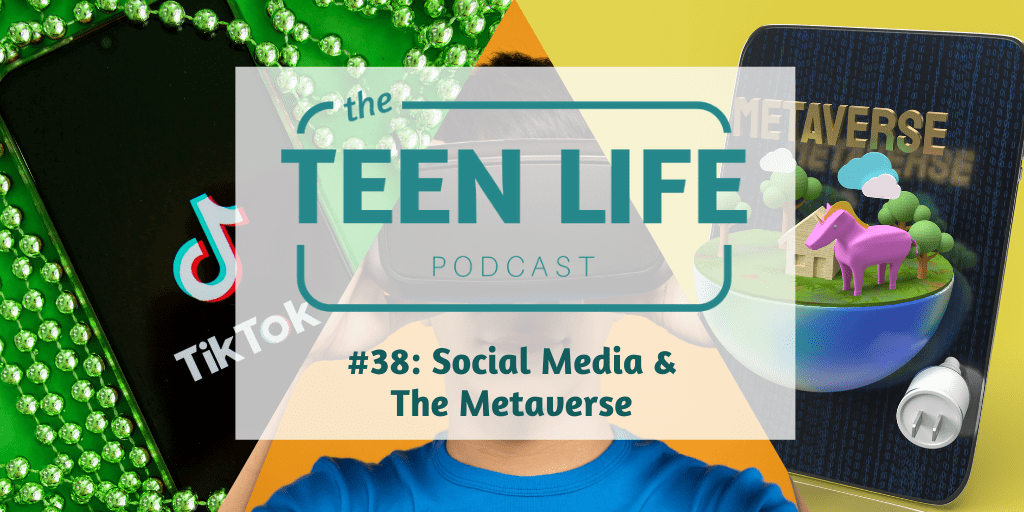
by Karlie Duke | Apr 14, 2016 | Parenting, Support Groups
The more I work with teenagers, the more evident is that they are their own worst enemy and biggest critic.
Check out this story from one of our facilitators, Josh Hardcastle, about a conversation that happened in his support group with teenage guys:
A couple of weeks ago, we were talking about the negative influences and negative voices in our lives. Some of the guys in the group spoke up and were talking about how when other people put them down, they believe it. They believe that they…
Are Lazy.
Are Stupid.
Won’t Succeed.
Are Slow.
Are Punks.
Can’t get anything right.
So then I threw out the question, “What if you didn’t believe them?”
I had remembered a line from a book I read that said something like, “The names that we embrace are the names that we become.” I shared with them some of the struggles with the names that I had been called in High School by a coach. After hearing it so many times, I began to believe that I was that name.
There was something about this whole conversation and group time that really clicked with them. I could actually see hope and strength starting to resonate with a few of them. They were sitting up straight and absolutely silent. Not because they didn’t know what to say, but because it looked like they were thinking about not believing they were these names that they had been called for so long.
Towards the end of the group time, one of the guys asked, “So does this work with me too? Because I put myself down more than anybody else.”
Man that broke my heart! But we were able to have a conversation as a group about what that looked like and how we can avoid embracing the negative names and voices we call ourselves. I closed out the group by asking, “What do you guys notice about everyone’s pages and what they heard from the important voices in their lives?” A few of them gave me the answers that most everybody had written down their family or best friends, but one of my quiet kids raised his hand and said, “Everyone has more than two important, positive voices who speak into their lives.”
I took it one step further and asked, “So what does that mean?” Another guy jumped in and said, “That we should be listening and focusing on the positive voices and ignoring the negative ones.”
Boom. Nailed it.
Teenagers are surrounded by all kinds of negative and critical voices, but these voices do not just come from outsiders. Sometimes, the worst thoughts are coming from inside their own heads.
So what can we do? How can we help encourage teenagers to think positively and be a better judge of their self-worth? I have a few suggestions for what we can do as parents, teachers, mentors and friends:
1. Ask questions that will allow them to brag.
Instead of bringing up that “B” on a test, or the fact that they were late getting home (…again), ask one of these questions: “What is one thing that you did really well today?” or “How did you help someone today?”
By asking these question, you are prompting their own brain to focus on the positive aspects of the day. You are telling them that they are capable of great things and you want to hear about the things that they are going well.
Let’s help train teens to engage in beneficial bragging! Bragging that fosters a good sense of self-worth and positive self-esteem.
2. Point out the little things.
Did your teen wash the dishes without being asked? Say, “THANK YOU!”
Resist the urge to say something like, “What’s wrong with you?! You never do the dishes without asking!” or “Finally! Now you’re doing the dishes every night for the rest of your life!”
I know this might be a silly example, but by encouraging the little things they do without adding a backhanded dig or sarcastic comment, they will also pay attention to the important role they can play!
Tell them when you are proud. Hang up that last report card on the fridge. Brag about the way they love on their siblings. Teenagers are necessary, helpful, hardworking and FUN – don’t forget that!
3. Encourage realistic goal-setting.
When I am hard on myself or engage in negative self-talk, it tends to be when I am disappointed in myself or feel like I haven’t reached the goal I set for myself. After a busy week, I am upset that the house is a little messy and that I didn’t cook every meal at home. I beat myself up when I miss one tiny detail on a big project, or find a typo in a blog post.
Goals are a great thing to have, but we should be realistic and not sweat over the little things! Encourage teenagers to set small goals. When they reach that goal, help them celebrate and especially if they don’t matter – forget about the tiny things that might not be perfect.
Perfection isn’t a realistic goal. But here are a few realistic goal examples for teenagers:
- Be on time to school in the morning – who cares if you forgot to brush your hair or ate a pop tart instead of a well-rounded, healthy breakfast?!
- Help with one thing around the house – start small by making the bed, or doing the dishes after dinner!
- Improve on the next test – don’t get upset if the next grade isn’t a perfect 100, but strive to do better than that last test!
Once you help them come up with, write down and spend time on their goals, don’t forget to celebrate when a goal is reached!
What do you think of these ideas? How else can we encourage teenagers to engage in positive self-talk?
Karlie Duke was in one of Teen Lifeline’s original support groups and now is our Communications Director. She is passionate about encouraging students to live better stories.

by Karlie Duke | Mar 10, 2016 | Dating, Entertainment, Parenting
How do we combat the false image of romance portrayed in the media we consume?
Before you freak out about the title of this blog, give me a chance to explain.
I am a hopeless romantic. My favorite movie is still Disney’s Beauty and the Beast. I love the stories where the princess falls in love and lives happily ever after. When it comes to books, I read anything and everything with a love story – Nicholas Sparks, The Twilight Saga, The Selection Series, anything by Karen Kingsbury. I have iron-clad opinions on whether Katniss should end up with Gale or Peeta. I cried my way through The Notebook and even read the less-popular sequel.
I admit that I am a faithful watcher of The Bachelor and The Bachelorette. I can tell you the names of the couples that are still together, watched all their TV weddings and even follow a few of my favorites on social media. I love the romantic dates, seeing who will get a rose each week, and watching the guys pick out the perfect engagement ring. I live for that final episode when the man gets down on one knee, and you see their love story come together for the perfect finale. Have I mentioned that I love all things romance?
But “porn,” really?? “Porn” can be a taboo word for our culture. Yes, we know it is out there, but we are not always willing to talk about it. Why would we want to bring up such an awkward topic with our teenagers? They don’t struggle with pornography addiction…and especially not my daughter!
Think again. According to research done by Covenant Eyes, 90% of boys and 60% of girls are exposed to pornography before the age of 18. That is your teenager. They are growing up in a culture where they can access pornography 24/7 on their television, laptop, or on the tiny phone that is attached to their hand. Pornography is a problem for adolescents and an issue that we do not ignore, but this blog is not about that type of pornography – naked pictures, sexting, magazines and x-rated movies (we will save that for another day).
For today, I want to speak mainly to the girls out there. Whether or not you connect with my story (or know someone else that does), I believe that our culture encourages girls and women to fall in love with these fictional men and their perfect relationships where arguments and morning breath do not exist.
In their book, Dateable: Are You? Are They?, Justin Lookadoo and Hayley DiMarco write:
“This is the #1 thing that distorts a girl’s view of reality, men and relationships. Maybe you haven’t heard it called female porn. Maybe you know it by the softer, more acceptable terms of “chick flicks” and romance novels…Your porn isn’t sexual, it’s romantic. But it gives you a warped view of men…if you have a man in your life, you begin to look at him in light of Mr. Perfect, and he can’t compare. He’ll never be as beautiful or romantic as the movie star with all the makeup and good lighting…It creates men who rescue you from out-of control buses and shower you with rooms full of roses. They fly you off to Paris for the weekend and save you from the evil villain bent on destroying the world. These men don’t exist…you are imposing an impossible set of demands on your guy.”
I am not saying that we need to ban romance movies or books – what would I do in my free time?
But I do have a few suggestions for how we can combat this culture where girls are looking for a Prince Charming who will never come, and where guys feel like they can never live up to the romantic standard set by Hollywood.
1. Discuss realistic expectations.
When you talk to teenagers about the latest romantic comedy, make sure that they know that those are unrealistic expectations. While it is not unrealistic to expect a man to open your car door, hold your hand or treat you like you deserve to be treated, men (just like women) are imperfect. They aren’t going to bring home flowers every day. Their lines aren’t written by a producer who makes a living by making you cry. They probably aren’t going to stand outside of your window with a boombox to win your affection. They sometimes smell, they don’t always enjoy everything you do and they probably don’t have the bank account to support your love of diamonds or to fly you across the world for an exotic date.
It is okay to give a reality check. Encourage them to write down what they are actually looking for in their “perfect mate.” Focus on qualities and characteristics, not necessarily on their physical appearance or ability to give great gifts.
2. Set Realistic Boundaries
You know your teenager best. If you see them falling into this romantic porn trap, set a few boundaries. Maybe they need to take a break from Nicholas Sparks. Perhaps you set a boundary where they have to sit down and have a discussion with you after they watch or read anything in that romance genre. Encourage them to find new, age-appropriate TV shows, books, or movies to invest their time in – try watching The Voice or Fixer Upper. Protect their hearts by limiting their exposure to romantically-saturated forms of entertainment. Maybe it is time to start a new hobby, like knitting!
3. Model Realistic Relationships
Real relationships exist, so don’t hide the realities of marriage from your teenager. You are doing a disservice to your children if you pretend that your marriage is as perfect as the ones we see on-screen. It’s okay for them to see you argue every now and then. Start bragging about the little things that your spouse does. Show that romance can come in the form of a well-timed kiss on the cheek, coming home to clean dishes, or a text asking how your day was. Surround your teenagers with healthy relationships, in and out of the home, where they can see how marriages work on a day-to-day basis.
What do you think of this idea of female, or romantic, porn? Do you have any other ideas for how we can protect and encourage teenagers?
Director of Communications
Karlie was in one of Teen Life’s original support groups and now is passionate about encouraging students to live better stories. She has gained experience working with teenagers through work, volunteer, and personal opportunities.

by Ricky Lewis | Feb 11, 2016 | Parenting
I have worked with teenagers now for over a decade. In that time, there have been significant changes in environment, social interaction, and educational expectations, but one thing has remained. Teenagers generally don’t feel they can talk to their parents.
I’m coming from a place where I sit in groups with teenagers who are strangers to me and within 30 minutes of talking to them can get them to share who the most important person in their life is and why. I’m writing this not as the parent of a teen but as someone who works with teens, so this is also for any youth worker that wants their conversation to get better. I’m hopeful that this helps you, and I’m also hopeful it helps me as I start to create an environment for conversation with my elementary school kids that will carry into their teen years – because we all know if I wait, it’ll only get harder.
In fact, today I was sitting in a group that has been meeting sporadically for about 12 weeks. One of the students brought up the difficulty she is having talking to her dad. There are lots of things involved with this situation, but I believe if her dad read these tips, he could learn so much more about his own daughter.
With that in mind here are the tips I have found to be helpful, and I hope you can apply to your relationship with your teen as well.
Talk less.
As a parent, it is difficult not to fill the silence. Resist this urge. In our training for group facilitators, we teach that counting to at least 10 (counting to 30 is better) when silence begins can help us wait long enough before assuming the other person is done talking. With kids, they are often just processing out loud, something most adults have decided needs to be internally. For them, it is normal to say out loud what they are thinking because they are trying it out. Let them. The fact is, they will become uncomfortable too and will likely say something else to fill the silence.
Really listen.
Deciding at the beginning of a conversation this is about them, puts you in a position of listening rather then looking for what is wrong and correcting, or even worse, that there is a problem when none actually exists. Listen just to hear, listen to learn, listen to be able to repeat back. Make an intentional decision to not be thinking about how to answer or how to tell them what they should be thinking or doing instead. There is a stage of life for that, but it should mainly apply to kids under 9 years old.
Ask great questions.
You can decide to do the others, but asking good questions is a skill – asking questions that invite more information, that don’t put them on the defensive and that show empathy are key and vital to getting the most out of your teen. Here are some suggestions to get you thinking:
- What bothered you about feeling that way?
- Have you ever thought that before?
- What do you think will happen if you do that?
- How do you think this might affect your future (or those around you)?
These are just some ideas to get you thinking, but the point here is to ask open-ended, inviting questions without making assumptions or projecting your bias onto the student you are working with.
Don’t correct unless safety is a concern.
This is so hard because we as parents tend to think that this is our full time job, or maybe that’s just me. It is easy to feel that if we don’t correct or advise in a situation with a kid, we are depriving them of a learning opportunity or wasting a teachable moment. What if the teachable moment happened without us saying anything? As I mentioned above, at this age, kids are trying things out. Allowing this in a safe way actually helps them learn better.
Here’s how I would suggest using this…
Simply decide to allow a whole conversation to happen without correcting, unless it is something dangerous. It will be hard, but do it. Decide to do this on a regular basis, but you have to realize how often that makes sense – once a week, twice a month, 5 days a week. Whatever it is, allow your conversation to be driven by your child or the teen you’re working with without any advice or correcting on your part (don’t worry too much, the odds of having the same conversation again are good). The value you will gain by doing this will open doors you never knew existed as they feel more comfortable sharing because they won’t feel so judged.
Create a safe environment.
One of the best things I have ever heard was a story about a father who told his kids that the old truck sitting out by the barn that didn’t run was a “safe zone.” It was the one place they could have conversations and tell him anything without any punishment. Consequences sometimes are unavoidable but he committed to no punishment. They knew that anytime they needed to tell something they feared they would be grounded for or worse, their cell phone would get taken away, they could tell him in that old truck.
You can do this too. Declare a safe zone in or around your house. At our house, right now, it is simply that my kids can tell me, “I need to tell you something but I don’t want to get in trouble for it.” I have given them permission to share anything because I would rather be in the loop than be seen as the enemy when it comes to decisions that affect character and life lessons my kids experience.
Reassure them about everything.
This is an extension of the listening tip. If you really are listening, you will hear opportunities to come back to and reassure them that you are there for them. A simple recognition of their interest or a question about a relationship they told you about can help them know that you truly care. This isn’t about you, so you can’t measure this based on how many times you think is enough. You have to keep reassuring until they tell you to stop or until that season has passed and it is no longer an issue.
If you work with teens, knowing how to get more out of conversations is vital to their success. Maybe you have some better ideas. Take a minute to share them below. We love hearing from you and learning together.
Ricky Lewis is our Executive Director and has been with us since the beginning. As a father of 4, he seeks to help parents and their kids Live Life Better.


























